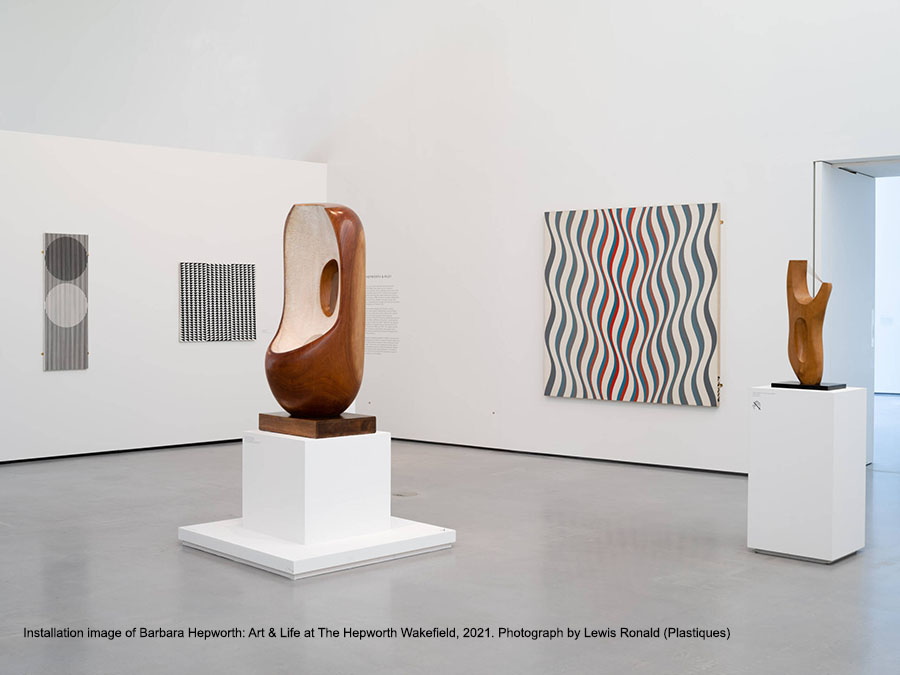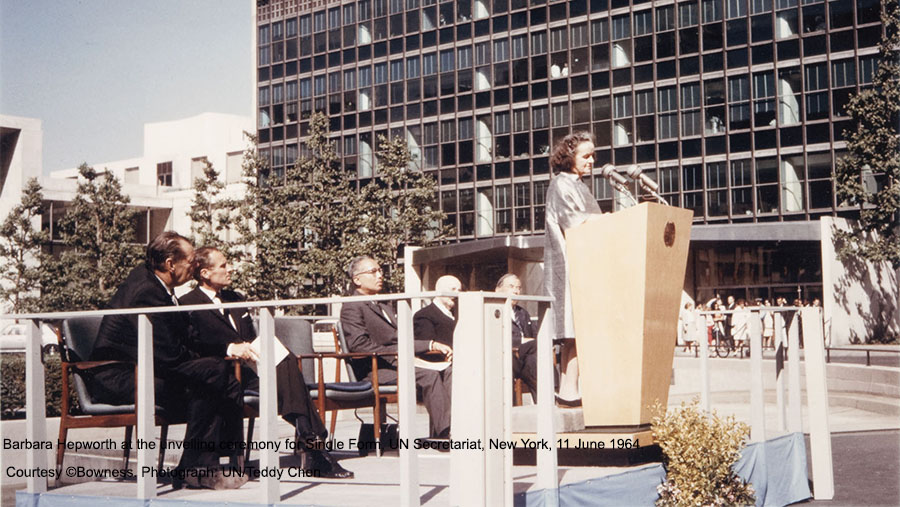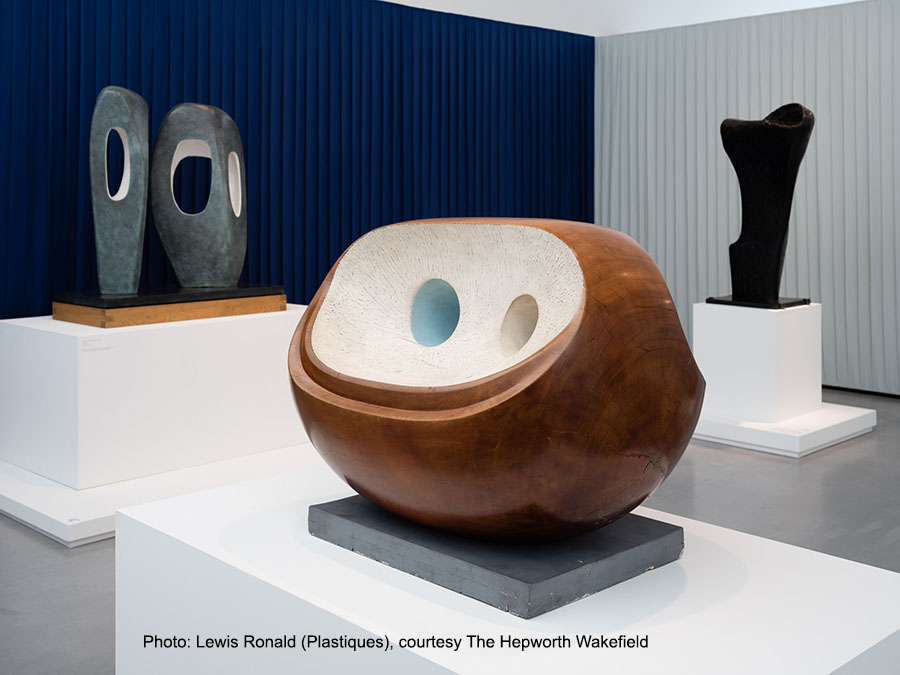The work and legacy of Barbara Hepworth, one of the most celebrated sculptors of the 20th Century, has been curated by Eleanor Clayton, with the support of a research network involving the University of Huddersfield.
The Hepworth Research Network (HRN) brings the School of Art and Humanities into partnership with The Hepworth Wakefield and the University of York’s Department of History of Art. The network enables artists, art historians, curators and conservators to share their knowledge of the material practices of sculpture and to honour the life and work of Wakefield-born Hepworth.
The award-winning gallery in Hepworth’s home town is celebrating its 10th anniversary with ‘Art and Life’, the largest exhibition of the artist’s work since her death in 1975, which runs until 27 February 2022.
The HRN was just coming together in the early part of 2020 when the coronavirus pandemic struck, but it has adapted to continue its mission enabling interdisciplinary conversations around the sculpture of Barbara Hepworth and her contemporaries.

“My role in the network is looking at how contemporary artists and designers think about Hepworth’s legacy and how her practices inflect the way people think and work now,” says Dr Anneke Pettican, Subject Group Leader in Art and Communications at the University and the network’s co-investigator. “Everything we do is placed in the public domain, and we have had some fascinating contributions so far.
Discover more about the Department of Art and Communications
“We received an Arts and Humanities Research Council (AHRC) grant of £24,000, which initially was for doing bespoke visits to key sites linked to Barbara Hepworth’s legacy, practices, life and work in general. But more recently, we had to rethink about working collaboratively in a Covid context.
“The network’s launch event was, as it turned out, on the weekend before the UK went into the first lockdown in March 2020. Our speakers included Professor Monty Adkins, the Dean of the University’s Graduate School and Dr Claire Nadal, one of our PhD scholars and now research co-ordinator at the Henry Moore Institute, Leeds.”
Their involvement in the launch event demonstrated the network’s interdisciplinary ethos. Prof Adkins, who composes and performs experimental electronic music, discussed how 3D sound can be used to think about Hepworth’s sculpture while Dr Nadal looked at Hepworth’s personal library and how reading was important in her work and sculptural thinking.
“I am delighted that the network has been able to contribute to the ambition for this wonderful exhibition, which is the largest retrospective of her practice ever seen,” adds Dr Pettican. “The network sits alongside the growing interest in her broader philosophy, and we are working with musicians, curators, conservators, artists, photographers and material scientists to look at what different people with different specialist interests might contribute to a rethinking of her work.”

The network’s variety reflects Hepworth’s work. She created costumes for ‘Electra’, at the Old Vic and set designs ‘The Midsummer Marriage’, at the Royal Opera House and her ‘Four Hemispheres’ was inspired by her interest in the satellite dishes at the Goonhilly station Cornwall, where she spent much of her life.
Perhaps her most famous work is ‘Single Form’ (1964), which stands in the plaza outside the United Nations building in New York.
“Material scientists and conservators are fascinated by her finish, the patinas on her work and how she produced these at the time, what resources she used and how they can be recreated,” says Dr Pettican.
“If you work with Sotheby’s or the Tate, how do you restore a Barbara Hepworth, legitimately, in the context of the now to make it authentic in relation to her intentions? How do you create a knot in the style of Barbara Hepworth? Musicians, curators and artists in the network are equally fascinated by that. There are many permutations to looking at her work within the network.”

Later this year Dr Pettican will curate the ‘Contemporary Artists and Barbara Hepworth’ symposium with Eleanor Clayton and Prof Michael White, the network’s principal investigator. There are also other HRN projects currently being finalised to be hosted by the University of Huddersfield.
The network includes world-leading Hepworth scholars including Penelope Curtis, Visiting Professor at the Center for Advanced Study in the Visual Arts, National Gallery of Art, Washington USA who co-curated ‘Barbara Hepworth: A Retrospective’ at the Tate Liverpool in 1994, Dr Chris Stephens, Director of the Holburne Museum, Bath and Laura Davies, renowned sculpture conservator.
“The combination of people makes it fascinating. With all the different perspectives on her life and work it allows individuals to reflect on their own specialities within this broader philosophical context,” adds Dr Pettican.
